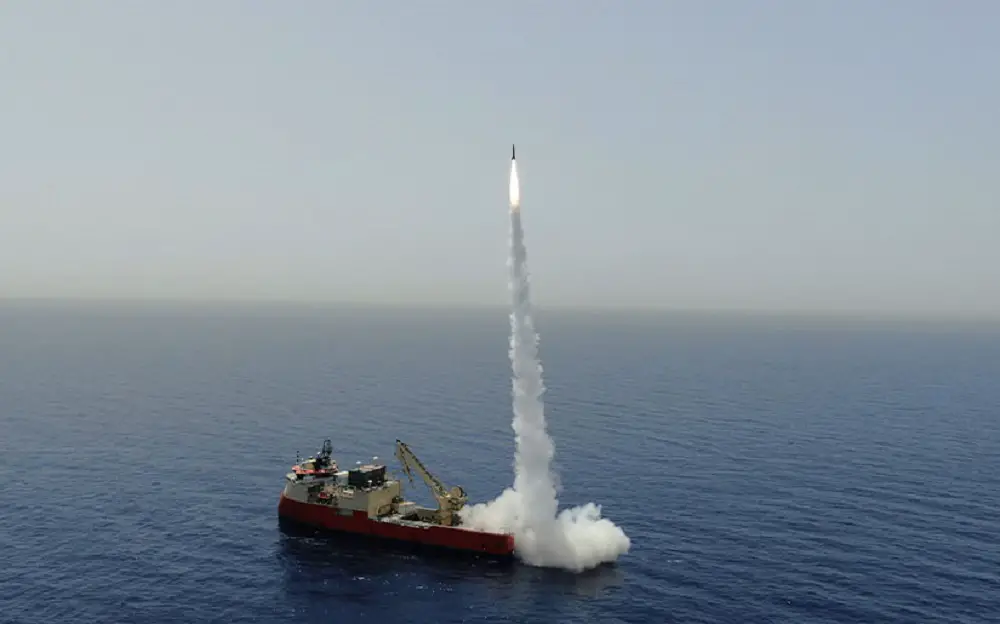Israel Aerospace Industries (IAI) is developing new versions of its LORA (LOng Range Artillery) theater quasiballistic missile to meet the growing demand of the Israeli Defense Forces (IDF) and foreign clients. The new quasiballistic missile versions will be capable of hitting targets in ranges greater than that of the current LORA, which has a range of 280 kilometers, and shorter. A quasi-ballistic missile (also called a semi-ballistic missile) is a category of missile that has a low trajectory and/or is largely ballistic but can perform maneuvers in flight or make unexpected changes in direction and range. At a lower trajectory than a ballistic missile, a quasi-ballistic missile can maintain higher speed, thus allowing its target less time to react to the attack, at the cost of reduced range.
The LORA is a long-range, precision-guided missile that was first developed in the early 2000s. It has a range of up to 400 kilometers and can carry a payload of up to 600 kilograms. The missile is equipped with a variety of warheads, including high-explosive, cluster, and thermobaric warheads. The new versions of the LORA are expected to be more capable and versatile than the current version. They will be able to hit targets at longer ranges, which will give the IDF and its allies a greater degree of precision and flexibility in their operations. The new versions will also be more resistant to EW interference, which will make them more difficult for enemy forces to defend against. They will also be designed to be launched from the ground and navy ships, and will have more advanced navigation systems that are less vulnerable to electronic warfare (EW) interference.

The missile was reportedly test fired in November 2003, March 2004, and in 2006. It is believed to have entered service in Israel in 2007. In June 2017, Israel test-fired a LORA again from the deck of a container ship.On 11 June 2018, the Azerbaijan revealed it had purchased the LORA system from Israel at an undisclosed date following president Ilham Aliyev’s visit to a Azerbaijan Land Forces missile unit housing both the LORA and the Polonez. LORA was used in the final days of the 2020 Nagorno-Karabakh war, being used to target a vital bridge in the Lachin corridor linking Armenia to the Nagorno-Karabakh region. It was initially thought to have destroyed the bridge, but later evidence suggested it had only inflicted limited damage. During Aero India in June 2023, India’s Bharat Electronics signed a Memorandum of Understanding with IAI to produce the LORA in India under license.
The development of the new LORA versions is part of IAI’s efforts to maintain its lead in the development of precision-guided weapons. The company is also developing other new missiles, including the JASSM-ER (Joint Air-to-Surface Standoff Missile Extended Range) and the SPIKE NLOS (Non-Line-of-Sight). IAI is Israel’s major aerospace and aviation manufacturer, producing aerial and astronautic systems for both military and civilian usage. It has 15,000 employees as of 2018. IAI is completely state-owned by the government of Israel. IAI designs, develops, produces and maintains civil aircraft, drones, fighter aircraft, missile, avionics, and space-based systems. Many of these products are specially suited for the Israel Defense Forces (IDF) needs, while others are also marketed to foreign militaries.
















